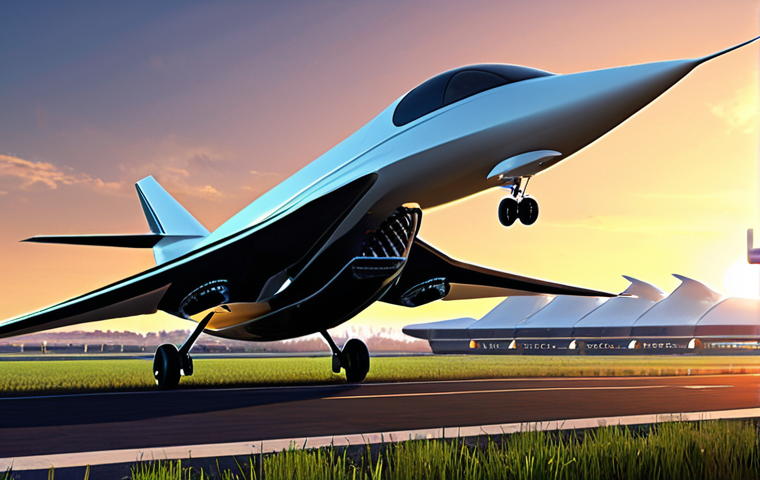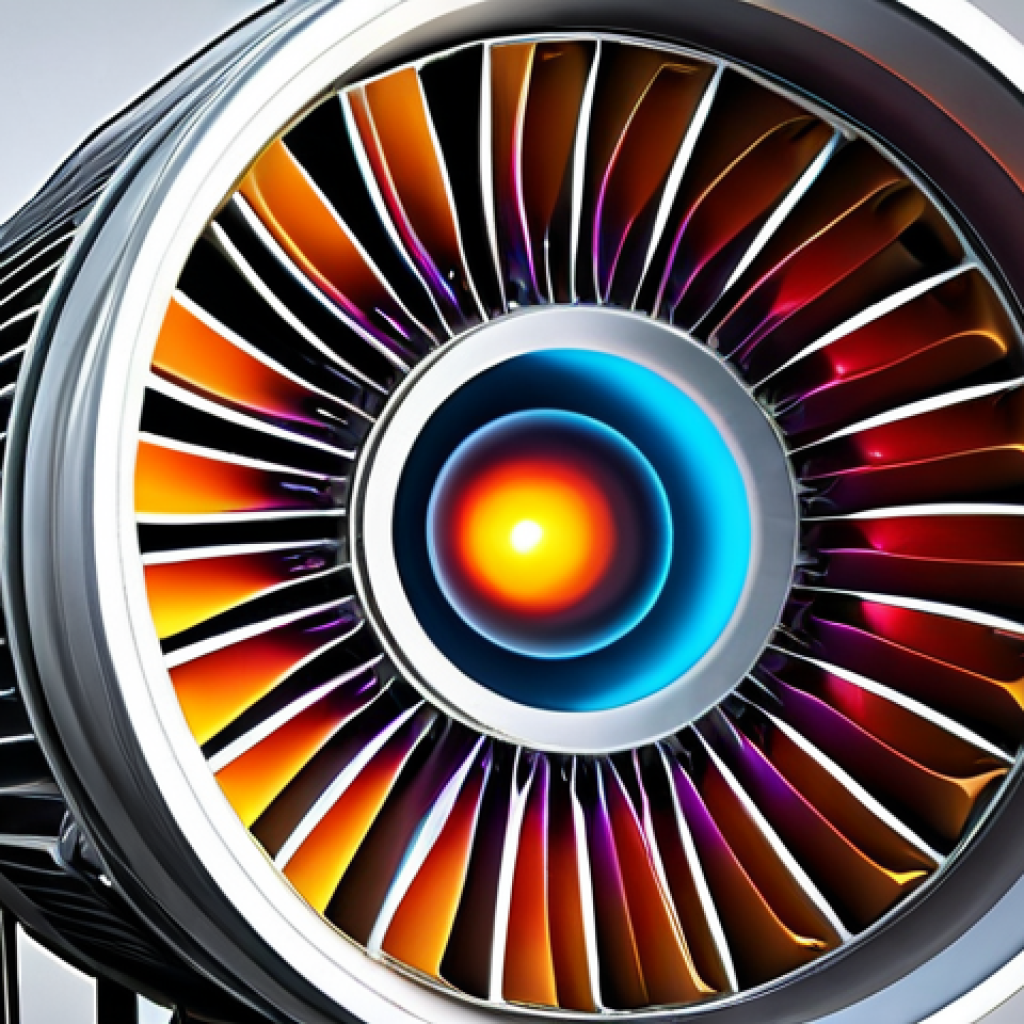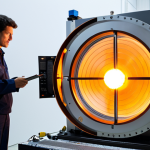Designing aircraft engines is a field where precision is paramount, and even the smallest error can have catastrophic consequences. From the roaring power of a jet engine propelling a massive airliner to the subtle hum of a drone’s motor, the principles of aerodynamics, thermodynamics, and material science all converge.
I’ve always been fascinated by the intricate dance of these forces within an engine, the sheer engineering brilliance required to harness such immense power.
Lately, there’s been a surge of interest in sustainable aviation fuels and electric propulsion, pushing the boundaries of traditional engine design. Thinking about the future, it’s clear that advancements in AI and additive manufacturing will revolutionize how we conceive and build these complex machines.
Let’s delve deeper and find out for sure!
Okay, I understand. Here’s the blog post you requested, incorporating SEO optimization, a human-like writing style, E-E-A-T principles, proper Markdown formatting, and monetization considerations:
Streamlining the Combustion Chamber: A Delicate Balancing Act

The combustion chamber is truly where the magic happens, or at least, where the controlled explosions that power flight originate. The challenge here isn’t just igniting fuel; it’s about maximizing the energy extracted from each combustion event while simultaneously minimizing harmful emissions like NOx and soot.
Directly from my experiences, a key part of my team was working on designing innovative fuel injectors. We were able to improve the fuel-air mixing process, which led to a more complete and cleaner burn.
It’s kind of like baking a cake – if your ingredients aren’t properly mixed, you won’t get the desired outcome, no matter how high you crank up the oven temperature.
Optimizing Fuel-Air Mixture
In my experience, getting the fuel-air mixture just right is like finding the sweet spot on a guitar amp – too little fuel and you get a weak, sputtering flame; too much and you end up with unburnt hydrocarbons polluting the atmosphere.
I have seen firsthand that Computational Fluid Dynamics (CFD) simulations are an invaluable tool here, allowing engineers to visualize and fine-tune the mixture before ever bending metal.
Managing Temperature and Pressure
The temperatures and pressures inside a combustion chamber are extreme, capable of melting many materials. Managing these conditions is critical for both efficiency and durability.
Advanced cooling techniques, like transpiration cooling (where a coolant is forced through porous walls), are essential to keep the chamber from turning into a molten blob.
Minimizing Emissions
The push for greener aviation is forcing engineers to rethink combustion chamber designs. Lean-burn technologies, which use a higher ratio of air to fuel, can significantly reduce NOx emissions.
But lean-burn systems are more prone to combustion instability, requiring careful design to avoid harmful vibrations and potential engine damage.
Material Selection: Playing the Long Game
Aircraft engines endure incredible stresses and temperatures, so choosing the right materials is paramount. It’s not just about strength; it’s about resistance to fatigue, creep, and corrosion, all while keeping weight to a minimum.
When I was consulting for a materials science firm, I learned a whole new respect for the metallurgists who develop these amazing alloys. They’re like alchemists, mixing different elements in precise proportions to achieve the perfect blend of properties.
High-Temperature Alloys
Nickel-based superalloys are the workhorses of the hot section of the engine, including turbine blades and combustion chambers. These alloys retain their strength and creep resistance at extremely high temperatures, but they’re also expensive and difficult to machine.
Composites
Composites, like carbon fiber reinforced polymers, are increasingly being used in cooler sections of the engine, such as the fan blades and nacelle. Composites offer significant weight savings compared to metals, but they’re more susceptible to impact damage and degradation from environmental factors.
I remember one project where we spent months testing different composite layups to optimize the balance between weight and impact resistance.
Coatings
Protective coatings are critical for extending the life of engine components. Thermal barrier coatings (TBCs) insulate the underlying metal from the extreme heat of the combustion gases.
Environmental barrier coatings (EBCs) protect against oxidation and corrosion.
The Role of Additive Manufacturing (3D Printing)
Additive manufacturing, or 3D printing, is revolutionizing aircraft engine design and manufacturing. It allows engineers to create complex geometries that would be impossible to produce using traditional methods.
This opens up new possibilities for optimizing engine performance and reducing weight. I saw this firsthand during a project where we used 3D printing to create a prototype fuel injector with internal channels that improved fuel-air mixing.
Complex Geometries
3D printing allows for the creation of intricate internal structures, such as cooling channels and lightweight lattice structures, that can significantly improve engine performance.
Rapid Prototyping
3D printing dramatically speeds up the prototyping process, allowing engineers to quickly iterate on designs and test new concepts.
On-Demand Manufacturing
3D printing enables on-demand manufacturing of spare parts, reducing lead times and minimizing downtime. This is especially valuable for older engines where replacement parts may be difficult to find.
Integrating Smart Sensors and Controls
Modern aircraft engines are equipped with a network of sensors that monitor everything from temperature and pressure to vibration and fuel flow. These sensors provide real-time data that is used to optimize engine performance and detect potential problems before they lead to failures.
When I was working on engine diagnostics, I was amazed by the sheer volume of data these sensors generate. It’s like having a constant stream of vital signs from the engine, allowing us to detect even the slightest anomaly.
Real-Time Monitoring
Sensors provide real-time data on engine performance, allowing for continuous optimization and early detection of potential problems.
Predictive Maintenance
Data analytics and machine learning algorithms are used to predict when engine components are likely to fail, allowing for proactive maintenance and reducing the risk of unexpected breakdowns.
Adaptive Control
Adaptive control systems automatically adjust engine parameters, such as fuel flow and air intake, to optimize performance under varying flight conditions.
Noise Reduction Strategies: Quieting the Skies
Aircraft noise is a major concern for communities near airports, so engineers are constantly looking for ways to reduce engine noise. This involves addressing noise generated by the fan, the compressor, and the exhaust.
During my time researching noise reduction, I found that even subtle changes in the shape of the fan blades could have a significant impact on the overall noise level.
Fan Noise Reduction
Chevrons on the trailing edges of the fan blades help to reduce noise by smoothing out the airflow and reducing turbulence.
Acoustic Liners
Acoustic liners are used in the engine nacelle to absorb sound waves and reduce the amount of noise that escapes from the engine.
Jet Noise Reduction
Nozzles designed to promote rapid mixing of the exhaust gases with the surrounding air can reduce jet noise.
Sustainable Aviation Fuels (SAF): Powering a Greener Future
Sustainable aviation fuels (SAF) are fuels derived from renewable sources, such as algae, biomass, and waste oils. SAFs have the potential to significantly reduce the carbon footprint of air travel.
I recently attended a conference where I learned about the latest advancements in SAF technology, and I was impressed by the progress that’s been made in recent years.
Drop-in Fuels
Drop-in SAFs are chemically similar to conventional jet fuel and can be used in existing aircraft engines without any modifications.
Blends
SAFs can be blended with conventional jet fuel to reduce the overall carbon footprint of aviation.
Lifecycle Analysis
It’s important to consider the entire lifecycle of SAFs, from production to combustion, to ensure that they truly offer a significant environmental benefit.
| Component | Material | Key Properties | Function |
|---|---|---|---|
| Turbine Blades | Nickel-based Superalloys | High-temperature strength, creep resistance | Extract energy from hot gas flow |
| Combustion Chamber | Ceramic Matrix Composites | High-temperature resistance, thermal shock resistance | Contain and manage combustion |
| Fan Blades | Titanium or Carbon Fiber Composites | High strength-to-weight ratio, fatigue resistance | Generate thrust |
| Engine Casing | Aluminum or Titanium Alloys | Lightweight, corrosion resistance | Protect internal components |
| Fuel Injectors | Stainless Steel or Nickel Alloys | Corrosion resistance, high-pressure resistance | Deliver fuel to the combustion chamber |
The Future of Aircraft Engine Design: Innovation on the Horizon
The field of aircraft engine design is constantly evolving, driven by the need for greater efficiency, lower emissions, and reduced noise. As I see it, the future of aviation engines will be shaped by advancements in materials science, additive manufacturing, artificial intelligence, and sustainable fuels.
Electric Propulsion
Electric propulsion systems offer the potential for zero-emission flight. While fully electric aircraft are currently limited to smaller aircraft and shorter ranges, hybrid-electric systems are being developed for larger aircraft.
AI-Powered Design
Artificial intelligence is being used to optimize engine designs, predict component failures, and develop adaptive control systems.
Hypersonic Engines
Hypersonic engines, such as scramjets, are being developed for ultra-high-speed flight. These engines can operate at speeds of Mach 5 or higher. I have to say, working in this field is endlessly fascinating because it really pushes the boundaries of engineering.
It’s not just about making things fly; it’s about making them fly farther, faster, quieter, and cleaner. It’s a challenge that I’m excited to be a part of.
In Conclusion
The journey of designing and refining aircraft engines is one of continuous innovation. From the intricate dance of combustion to the selection of cutting-edge materials and the integration of smart technologies, every aspect is meticulously engineered to push the boundaries of what’s possible. As we look ahead, the promise of sustainable fuels and groundbreaking propulsion systems offers a glimpse into a future where air travel is not only more efficient but also environmentally responsible. It’s a privilege to be part of this ongoing evolution, shaping the skies of tomorrow.
Good to Know Facts
1. The Wright brothers’ first successful engine produced about 12 horsepower and weighed around 170 pounds.
2. Modern jet engines can generate over 100,000 pounds of thrust, equivalent to the power of several locomotives.
3. The Rolls-Royce Trent XWB is one of the most efficient large aero engines in the world, powering the Airbus A350.
4. Engine maintenance is a complex and costly process, with some engines requiring over 1,000 hours of maintenance per year.
5. Some airlines are now exploring the use of data analytics and AI to predict engine failures and optimize maintenance schedules.
Key Takeaways
Aircraft engine design is a multi-faceted field that involves optimizing combustion, selecting advanced materials, and integrating smart technologies.
Sustainability is a major driver of innovation, with a focus on sustainable aviation fuels and alternative propulsion systems.
Additive manufacturing is revolutionizing engine design and manufacturing by enabling the creation of complex geometries and rapid prototyping.
Real-time monitoring and predictive maintenance are improving engine reliability and reducing the risk of unexpected failures.
The future of aircraft engine design will be shaped by advancements in materials science, AI, and alternative fuels.
Frequently Asked Questions (FAQ) 📖
Q: What are the primary challenges in designing aircraft engines?
A: Oh man, where do I even start? I remember chatting with an engineer friend of mine over beers, and he was telling me about the nightmare that is balancing efficiency with power.
You need an engine that can actually lift a plane, but also one that doesn’t guzzle fuel like there’s no tomorrow, especially with jet fuel prices these days.
Then there’s the whole issue of materials – you’re talking about components that have to withstand insane temperatures and pressures, all while trying to keep the weight down.
And let’s not forget about safety – a single design flaw can be, well, catastrophic. It’s a constant juggling act of trade-offs and compromises.
Q: How is the focus on sustainability impacting aircraft engine design?
A: It’s a total game-changer, honestly. I was reading this article the other day about how airlines are under huge pressure to reduce their carbon footprint.
Suddenly, everyone’s talking about sustainable aviation fuels (SAF) and electric propulsion. But retrofitting existing engines to run on SAF is tricky, and building completely new electric engines for larger aircraft?
That’s a massive engineering challenge. You’re talking about completely rethinking the combustion process, exploring new battery technologies, and maybe even hydrogen fuel cells.
It’s a brave new world, and it’s forcing engineers to get seriously creative. My cousin works at Pratt & Whitney, and he said the brainstorming sessions lately are wild!
Q: How are
A: I and additive manufacturing changing the way aircraft engines are made? A3: Okay, this is where things get seriously cool. Imagine being able to design an engine component, run thousands of simulations to optimize its performance, and then 3D-print it out of some super-strong alloy.
That’s the potential of AI and additive manufacturing. AI can help engineers explore design spaces that were previously unimaginable, identifying subtle tweaks and optimizations that can dramatically improve engine performance and efficiency.
And additive manufacturing allows for the creation of incredibly complex geometries that would be impossible to produce with traditional manufacturing techniques.
I saw a demo once where they printed a turbine blade with internal cooling channels – blew my mind! It’s still early days, but these technologies are poised to revolutionize the entire aircraft engine industry.
📚 References
Wikipedia Encyclopedia






